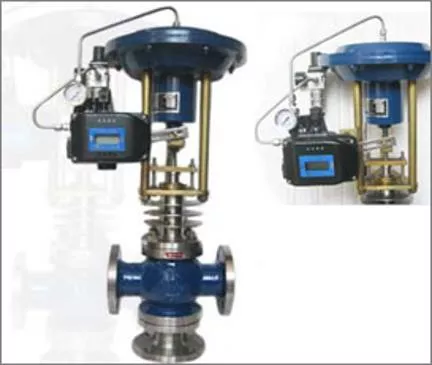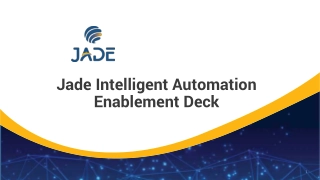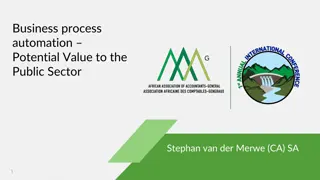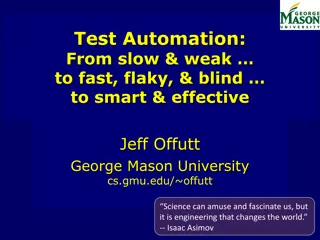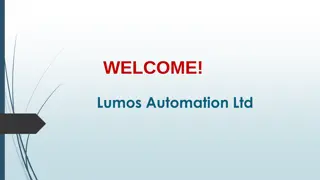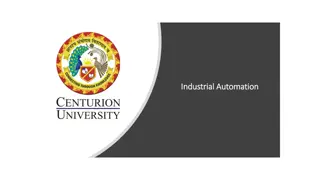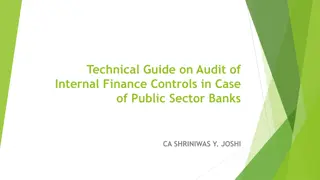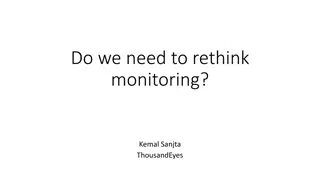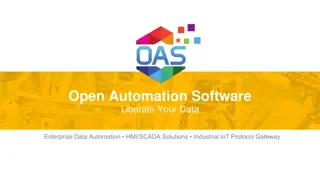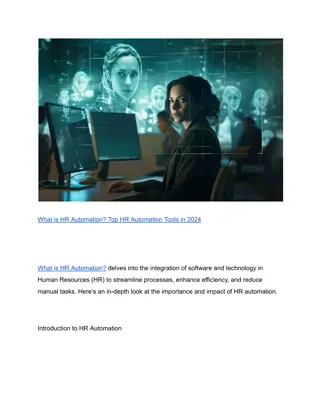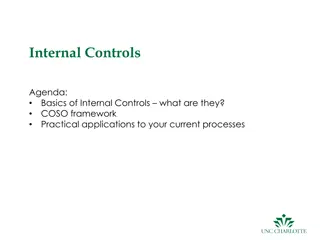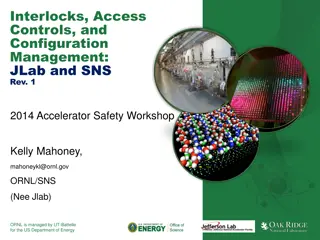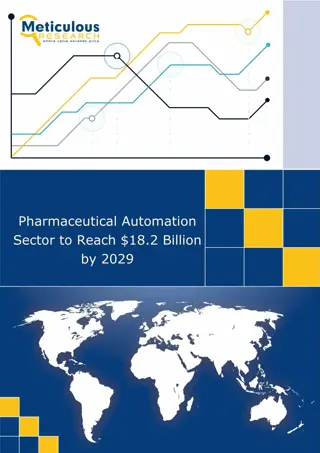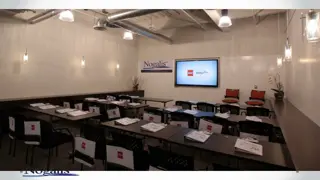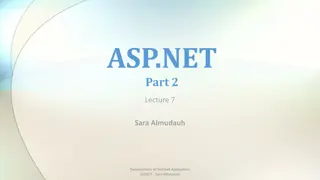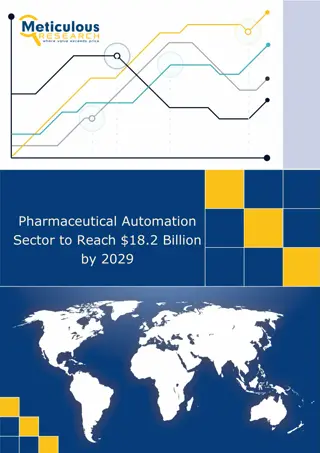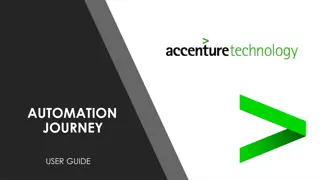Controls and Automation Session Objectives and Terminology
Explore the objectives and terminology related to controls and automation, including P.I.D. controller theory, valve positioner, and actuator workings. Learn about different control actions, such as proportional, integral, and derivative control, and understand concepts like set point, open-loop system, and closed-loop system. Discover practical demonstrations and adjustments for system tuning within a total duration of 120 minutes.
Download Presentation

Please find below an Image/Link to download the presentation.
The content on the website is provided AS IS for your information and personal use only. It may not be sold, licensed, or shared on other websites without obtaining consent from the author. Download presentation by click this link. If you encounter any issues during the download, it is possible that the publisher has removed the file from their server.
E N D
Presentation Transcript
CONTROLS AND AUTOMATION CONTROLS AND AUTOMATION Mahesh A. Patil C/E Elstan A. Fernandez ETO
SESSION OBJECTIVES SESSION OBJECTIVES Revise Terminology Understanding P I D controller theory Valve Positioner and Actuator working Adjustments and system tuning Practical / Demonstration Total duration 120 minutes
TERMINOLOGY TERMINOLOGY Open Loop system Closed Loop System Set Point Desired Value (dv) Measured value (mv) Actual value (av) Comparator Error Deviation Offset Dead Band Proportional band Settling Time
TYPES OF CONTROL ACTIONS TYPES OF CONTROL ACTIONS STEP CONTROL ON OFF CONTROL SEQUENCIAL CONTROL PROPORTIONAL CONTROL P + DERIVATIVE CONTROL P + INTEGRAL CONTROL P + I + D CONTROL
Proportional Set Point Controller Output Error - + t KP e(t) t Ki e(t) t + 0 Kd Kpe(t) + Integral Process Variable Ki + Derivative d t Kd PROPORTIONAL - (m)controller o/p is proportional to deviation { e(t)} m = - Kp * e(t) INTEGRAL - Rate of change of (m)controller o/p is proportional to deviation { e(t)} dm / dt = Ki * e(t) i.e m = - Ki e(t) * dt DERIVATIVE - (m)Controller o/p is proportional to rate of change of deviation { e(t)} m = - Kd * de(t) / dt
Initial Condition Step Input Final Condition Process Time P Control Proportional Action Desired value Time Offset I Control Proportional + Integral Action Desired value Time D Control Proportional + Integral + Derivative Action Desired value Time
Restrictor Nozzle Flapper arrangement Nozzle uncovered 3 Psi Acts as a transducer or an signal amplifier Supply Air Pr 1.5 bar Control air output pr range 3 ~ 15 psi Pressure Gauge Nozzle In mid position Flapper Movement(X1, X2) approx 20 microns 9 Psi Flapper Orifice Dia 0.25 mm Nozzle covered Nozzle Dia 0.40 mm 15 Psi
Periodic calibration and cleaning of measuring devices/sensors (e.g. RTD probe in the FO purifier heater line, M/E JCW line etc.) Replacement of polyurethane tubes inside the controller every 24 months, as tubes tend to damage due to heat, oil and vibration. Quarterly cleaning of nozzle with a thin SS wire (<0.25 mm) Weekly cleaning of orifice by depressing the push button. Bellows and linkages must be checked for their intactness. Watch out for signs of air leakages inside the controller box Leakages in signal transmission lines from controller to regulating valve. Valve condition and integrity of valve packing/seals, moving surface of valve spindles. And most important, cleanliness of supply air. Correct working of filters and Pressure reducers settings.



